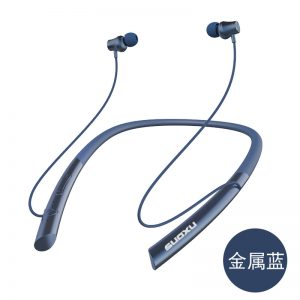1. Frequency Response (Frequency Response): The sensitivity value corresponding to the frequency is the frequency response, and the graph is the frequency response curve. The range that human hearing can reach is about 20Hz-20000Hz. At present, the mainstream earphones on the market have reached it. To meet this requirement.
The frequency response range refers to the width of the frequency band that the earphone can send. The frequency response width of an excellent earphone can reach 5Hz-40000Hz, while the hearing range of the human ear is only 20Hz-20000Hz. It is worth noting that the standards for defining the width of the frequency response are different, for example: it is less than 1/2 of the average output amplitude as the standard or less than 1/4 as the standard, which is obviously different. The general manufacturer measures the frequency response width with the output amplitude reduced by 1/2 as the standard, which means that the -3dB is the standard, but due to the different test standards used, some products are measured with -10dB. In fact, the standard measurement is equal to 1/16 lower than the normal value. When purchasing, users should note that there may be different test standards for the frequency response width of headphones of different brands.
2. Headphone Impedance (Impedance): Pay attention to the difference between the meaning of resistance and resistance. In the world of direct current (DC), the effect of objects on the current is called resistance, but in the field of alternating current (AC), in addition to resistance hindering current, Capacitance and inductance will also hinder the flow of current, this effect is called reactance, and what we call impedance is the sum of resistance and reactance in a vector.
On desktop computers or power amplifiers, VCDs, DVD TVs and other machines with headphone jack output, it is generally appropriate to use medium and high impedance headphones. If you use low-impedance earphones, you must first turn down the volume before plugging in the earphones, and then increase the volume a little bit to prevent the earphones from being overloaded and the earphones are burned out or the voice coil is deformed and misplaced, causing the sound to break. Low-impedance earphones are generally easier Therefore, portable and power-saving devices such as Walkman should choose low-impedance headphones. At the same time, attention should be paid to high sensitivity. Sensitivity index is more important for Walkman.
3. Headphone Sensitivity (Sensitivity): the sound pressure level that the headphones can emit when the power of 1 milliwatt is input to the headphones (the unit of sound pressure is decibels, the greater the sound pressure, the greater the volume), so generally the higher the sensitivity, the greater the impedance Smaller, the easier the earphones to sound and drive.
In layman’s terms, the sensitivity of the headset refers to the amount of power that needs to be input under the same conditions here. The higher the sensitivity, the smaller the input power required. For portable devices such as walkmans, sensitivity is an indicator worthy of attention. Of course, for desktop computers, this indicator is relatively less important.








